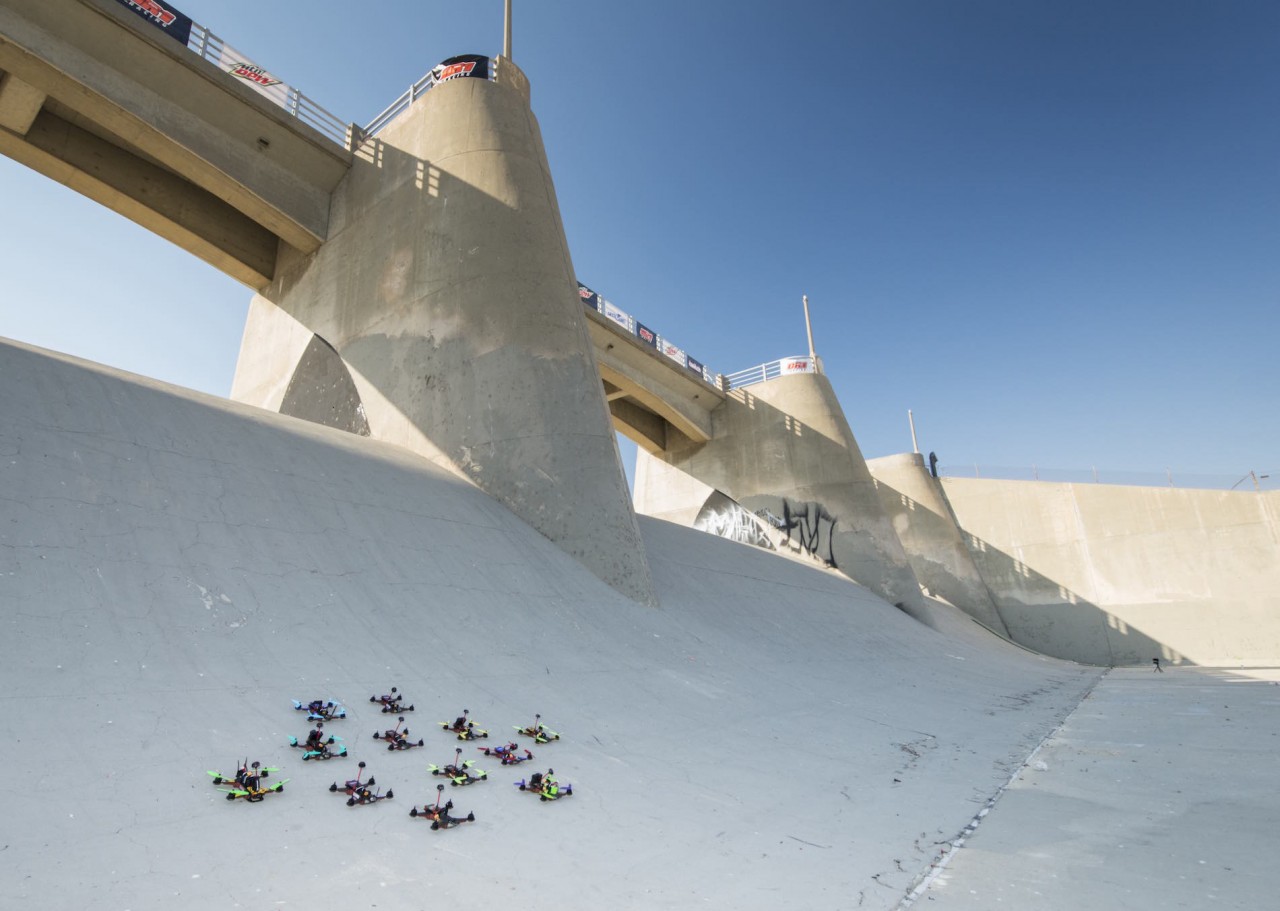 DR1 Invitational: June 25 & 26th at the Sepulveda Basin in Van Nuys, California. The first World Championships of Drone Racing sponsored by Mountain Dew. 2016©Carrie JesenovecDR1 Invitational: June 25 & 26th at the Sepulveda Basin in Van Nuys, California. The first World Championships of Drone Racing sponsored by Mountain Dew. 2016©Carrie Jesenovec
DR1 Invitational: June 25 & 26th at the Sepulveda Basin in Van Nuys, California. The first World Championships of Drone Racing sponsored by Mountain Dew. 2016©Carrie JesenovecDR1 Invitational: June 25 & 26th at the Sepulveda Basin in Van Nuys, California. The first World Championships of Drone Racing sponsored by Mountain Dew. 2016©Carrie Jesenovec
Drones have become an everyday norm, something anyone can find at Best Buy or Amazon. For around $1,000 you can purchase a DJI Phantom 4 and start recording scenic landscapes in no time. After all, that’s what drones have been largely associated with: video footage. Even the smallest drone are capable of capturing breathtaking video.
In the underground world of drones, however, their sole purpose is to go as fast as possible, crashes be damned.
Drone racing is a fairly new sport, its history dating back only a few years. Mass produced drones, such as DJI’s Phatom 4, rely on a steady flight pattern. Their purpose is to capture amazing footage, but not much else. That changed when the drone racing underworld began to grow and morphed the cinema tool into speed machines.
This past weekend, the DR1 Invitational took place in Los Angeles at the Sepulveda Dam. It was the first drone race streamed live on Twitch and aired live on the Discovery Channel and Science Channel with a live perspective from the pilot’s FPV.
The event itself was very subdued and personal with only 12 racers though some events—such as the National Drone Racing Championships in New York this August, for which most of the racers at the DR1 Invitational had qualified—include up to 100 contestants. In events like the Nationals, each race can take place in three-hour increments, thus making it an all day experience. DR1 was nothing like that.
What sets drone racing apart from the normal way of controlling a drone is FPV, or first-person view. Normal drones rely on relaying the camera view into a screen on the controller or a device hooked up to the controller. For racing drones, the pilot straps on a VR-like headset that receives the feed from the camera on the drone. It’s an immersive experience as you explore the surrounding environment through the perspective of the drone. Wiping through turns at 80 miles per hour can be dizzying, but also wildly entertaining.
The thing that set the DR1 Invitational apart is the course. Unlike most other courses, this one made use of the dam and incorporated it into the race. Most races use a static ground format, but at this event, it made us of the track and introduced a 3D aspect. Racers corkscrewed through the dam portion of the racetrack, side-winding their way around the bridge.
With drones becoming more advanced and technology pushing this format forward, courses will become even more integral to the sport. Unlike previous drone tracks or even a sport like NASCAR, the courses aren’t basic run-of-the-mill circles. With the use of a three-dimensional course, the possibilities are endless to what can become of future drone races.
The drones used in these races, to put it nicely, don’t look sexy. They look cool and efficient, but not anywhere near as sleek as the DJI Phantom. But the brawn gives way to much more important features: durability and versatility. These drones work are a lot like LEGO; they’re meant to be reassembled in a matter of minutes. One wrong turn can lead to a crash, and honestly, how can a drone flying at 80 miles per hour not expect to crash? The loud metallic thud rang at least three times during the time trials and each time, the drone needed to be repaired on the spot.
The design of the drones is made up of four main parts: flight controller, ESC (electric speed controller), motors and FPV system. The flight controller, even larger than normal drone controllers, is the brain. The ESC’s, or electronic speed controller, do all the muscle work. Motors give the propellers power and keep the drone in flight. FPV consists of two parts: the VTX and the camera. The pieces are strapped and glued together on a carbon fiber base, the skeleton of the drone.
The key element of the FPV system is the standard camera, which is usually a standard definition video. Nothing special here, no 4K or even 1080p; the real purpose of this is to be as small as possible and to provide the visuals that can be sent to the racer’s headset. To compensate for the lack high-res video, many drone builders attach GoPros on top of the drone to capture the flight in high definition.
As cool as the drones are, the real stars of the world are the pilots. The diverse and wide-ranging group that attended DR1 ranged from ages 16 to over 40. The winner of the DR1 Invitational was the youngest pilot, Luke Bannister, who was just 16 years old. Some of the other pilots were Bapu Madhu, Tommy Tibia, Ken Dougherty, Johnny Shaer and Zoe Stumbaugh. Zoe is considered the best female pilot in the world. Each of the pilots already qualified for the National Drone Racing Championships in August.
Truth be told, not any regular Joe Schmo can take up drone racing. It can be complicated and expensive, but it’s also a rather adventurous hobby (if not career) for most people.
If you’ve never checked out the Drone Racing League, now may be the time to get ahead of the curve. Luke Bannister did and scored a sweet $30,000 payday for winning the DR1 Invitational.













